MUST-HAVES

6 long-sleeved bodysuits
...because newborns cannot regulate their body temperature very well, we stick to our midwife's recommendation to cover the limbs with long-sleeeved bodysuits. Kimono or wrap bodysuits are very practical because newborns cannot hold their head yet.
4 trousers
…ideally with feet included or trousers + 6 pair of socks.
Integrated feet are practical because they keep the feet warm while socks always "fall" off.
3 pajamas
…snuggly, warm and made of breathable textiles, covering the baby's entire body. Especially for newborns we recommend pajamas with buttons top to bottom at
the front, for easy changing during the night.
3 onesies
...or rompers, dungarees, jumpsuits, etc. Onesies are the most comfortable daywear for a newborn and so easy to put on. A bodysuit underneath and baby is dressed and
warm.
2 cardigans
...with buttons, so you don't have to pull it over your newborn's fragile head. Layering is easily done with our
knit cardigans for baby's optimal temperature.
2 hats
...in winter and summer. In the cold season because most of the body heat is lost through the head and in summer the had is here to protect the sensitive skin from the sun.
2 sleeping bags
...for alternating. We recommend 1.5 TOG - 25 TOG filling for sleeping bags if your room temperature is around 20-22 degrees at night.
1 overall
…or jacket, but overalls are much more comfortable for newborns plus keep the entire body warm. This is an
essential for winter, so your little one can enjoy the fresh
air.
1 pair of booties
...or thick socks. We love the booties from our partner brand hvid made from finest merino wool in Italy.
-

6 long-sleeved bodysuits
...because newborns cannot regulate their body temperature very well, we stick to our midwife's recommendation to cover the limbs with long-sleeeved bodysuits. Kimono or wrap bodysuits are very practical because newborns cannot hold their head yet.
-
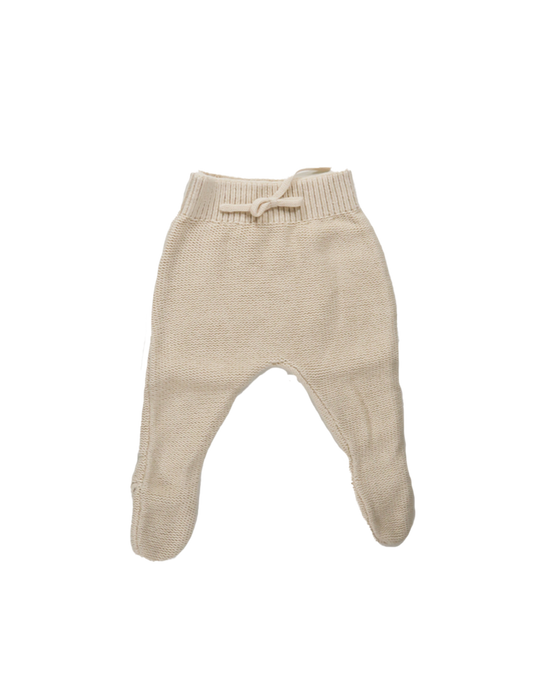
4 trousers
...ideally with feet included or trousers + 6 pair of socks. Integrated feet are practical because they keep the feet warm while socks always "fall" off.
-

3 pajamas
...snuggly, warm and made of breathable textiles, covering the baby's entire body. Especially for newborns we recommend pajamas with buttons top to bottom at the front, for easy changing during the night.
-
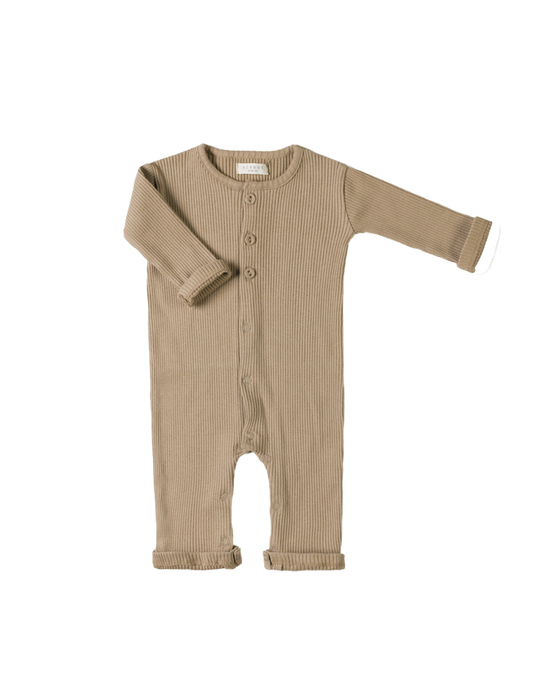
3 onesies
...or rompers, dungarees, jumpsuits, etc.. Onesies are the most comfortable daywear for a newborn and so easy to put on. A bodysuit underneath and baby is dressed and warm.
-

2 cardigans
...with buttons, so you don't have to pull it over your newborn's fragile head. Layering is easily done with our knit cardigans for baby's optimal temperature.
-
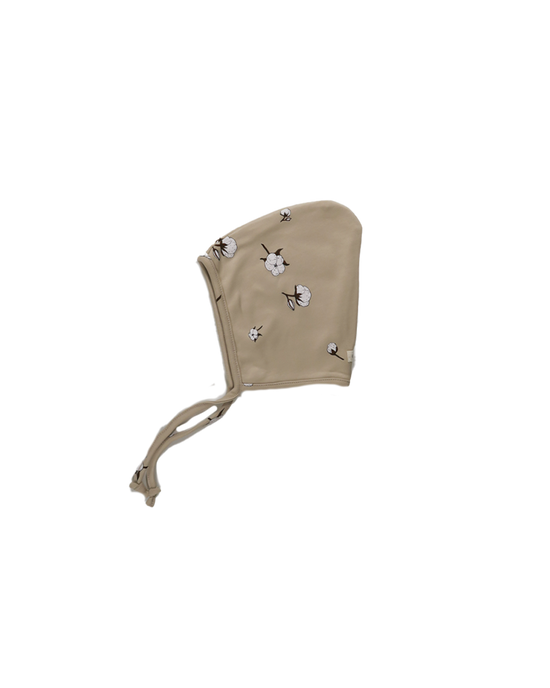
2 hats
...in winter and summer. In the cold season because most of the body heat is lost through the head and in summer the had is here to protect the sensitive skin from the sun.
-

2 sleeping bags
...for alternating. We recommend 1.5 TOG - 2.5 TOG filling for sleeping bags if your room temperature is around 20-22 degrees at night.
-
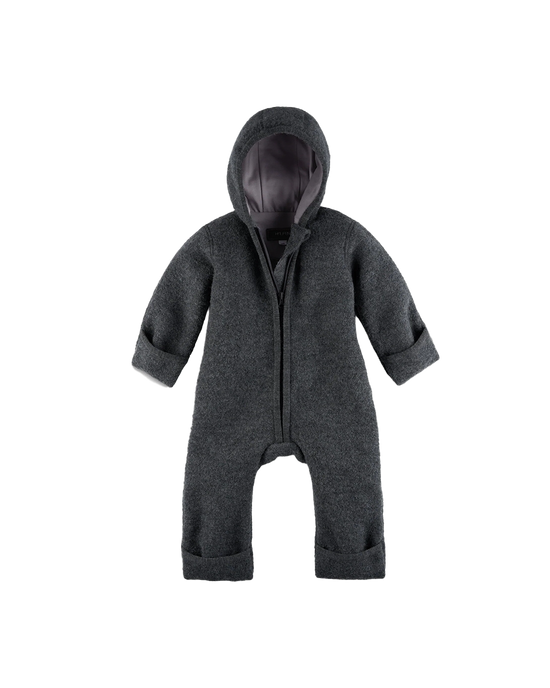
1 overall
...or jacket, but overalls are much more comfortable for newborns plus keep the entire body warm. This is an essential for winter, so your little one can enjoy the fresh air.
-
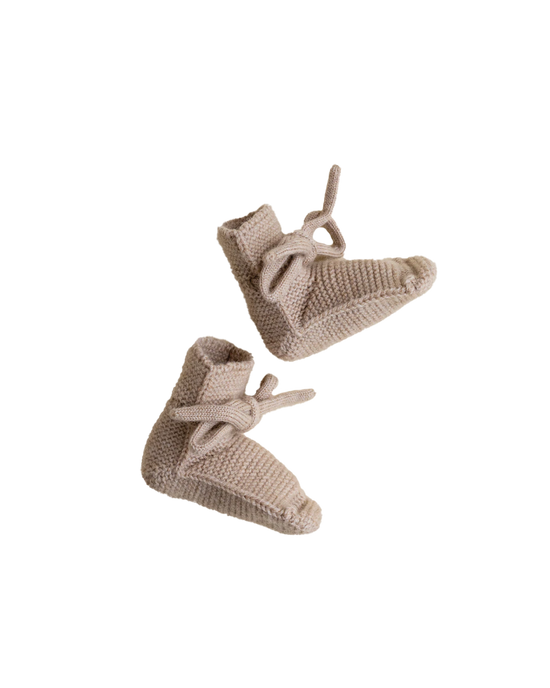
1 pair of booties
Discover hvid...or thick socks. We love the booties from our partner brand hvid made from finest merino wool in Italy.

NEWBORN CLOTHING MUST-HAVES
The must-haves are a total of 20-22 pieces per size, assuming you're doing 1-2 laundries per week.
Most babies start with the size 50 or 56 after birth and outgrow these within a few weeks only. With OiOiOi, you can even start at size 44 (preemie) and upsize anytime. Your bundle of newborn clothes will arrive within 3-5 working days from placing your bundle order.
Because newborns change their size really quickly, we recommend sticking to the must-haves for your starter-set at first. Consider borrowing or renting instead of buying everything new. The learning curve is steep and you will figure out pretty quickly what baby clothes is useful for you and your baby.
THE RIGHT SIZE

How do I know which size to get for the first weeks after birth?
Check the percentile curve with your gynecologist to
estimate whether your newborn will need a size 50 or
rather a 56. This is assuming your baby will come around
due date. If your baby is born prematurely, we do carry
MIDI bundles in size 44 as well.
How often do Il need a new size?
Usually every 6-8 weeks in the first year. The average rental period of our OiOiOi customers is 52 days per
size. Thus, renting vs. buying makes absolutely sense.
How tight/loose should the clothes fit?
The baby should be able to stretch arms & legs well,
usually a finger width between the fabric and the body is
good fit. This sizing also helps when dressing your child.
If you get oversized clothes and they're too loose, you
risk the baby is not warm enough.
What clothes do I need for the hospital bag of my newborn?
Only ONE set to go home. The hospitals usually provide baby clothes in newborn sizes
for your stay.
SEASONS CHANGE

Having a summer baby?
While textiles can be lighter, we'd recommend covering the newborn's limbs with long-sleeved bodysuits and trousers if possible to protect them from the sun. You'll be surprised to see that newborns need the same essentials as in winter, because they don't have too much fat yet to protect their body and usually little hair to keep the head warm enough.
Having a winter baby?
Layering it is! Bodysuit + Trouser/Romper for inside, add layers of Cardigan and/or Overall plus a warm hat for outside. Midwifes teach us that hats are important as most of the body's heat is lost through the head.
How do you know if your baby's too hot or cold?
If they're too hot you can feel it at the back of their neck and if they're too cold you'll feel it by touching their underarms/lower legs. Feeling the temperature at the baby's hands and feet might not be accurate, as there's less blood flowing through these areas.

WHICH MATERIAL TO CHOOSE FOR YOUR BABY CLOTHES?
What are the recommended textiles for baby clothing?
We recommend natural & breathable fabrics which help the babies regulate their body temperature. We work mostly with organic cotton for the baby clothes, which is vegan, breathable and free of any chemical pesticides in growing and no harmful chemicals in production - the toxins-free organic clothes are extra soft to baby's sensitive skin.
Think about the baby's comfort!
Wool can be itchy, synthetics made from petroleum sources might not be that breathable. Thanks to a small percentage of elastane added to our organic cotton clothes, the clothes are stretchy and fit the baby comfortably.
Think what's practical for you!
Do you want to wash your baby's clothes together with yours and maybe tumble dry instead of spending your time hanging the laundry to dry? You don't have time to do hand-wash and brush or treat your clothes with special equipment? Yup, that's exactly why we work with organic cotton for the clothing must-haves. It's super practical for the parent and ideal for the baby.

PRACTICAL BABY CLOTHES
When it comes to your baby starter-set with must-haves, it's rather about finding practical, functional clothes in good quality than about quantity. Here are a few things to watch to get the right baby clothes essentials:
Trousers with integrated feet and a wide, soft waistband
Kimono/Wrapbodysuits with buttons in the front so you won't have to pull the bodysuit over the baby's head and neck, which is still unstable in the first few months.
Rompers, onesies and pajamas buttoned from top to bottom for ease of changing diapers.
Hats should fit tightly around a newborn's head and for just after birth we suggest strap bonnets so the hats actually stay on.
Cardigans instead of pullovers. Also here, buttons do the trick and make dressing your baby a lot easier.











